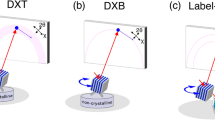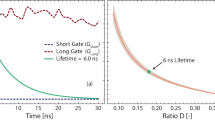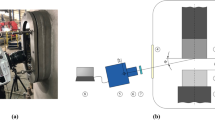Abstract
THE fine structure of the more important lines of the arc spectrum of silver was examined by means of a reflecting echelon grating of high resolving power. This instrument and its mounting have been pre viously described1. The light source was a tube of fused silica fitted with external electrodes similar to those used by me in the investigation of the structures of the arc lines of indium1, thallium2, and gallium3, excited by means of a high frequency oscillator. The discharge tube was filled with neon at a pressure of about 0.5 mm. of mercury, and the capillary portion of the tube contained a small quantity of silver chloride. The capillary was heated to a temperature of about 600° C. All the lines examined were found to be simple. The half-value width of the lines was determined by obtaining two images of the line under investigation on the same plate, making two exposures at different pressures of the air surrounding the echelon grating ; the separation of the images at the smallest pressure difference at which the two images could still be resolved was measured and taken to be the half-value width of the line.
This is a preview of subscription content, access via your institution
Access options
Subscribe to this journal
Receive 51 print issues and online access
$199.00 per year
only $3.90 per issue
Buy this article
- Purchase on SpringerLink
- Instant access to full article PDF
Prices may be subject to local taxes which are calculated during checkout
Similar content being viewed by others
References
D. A. Jackson, Proc. Roy. Soc., A, 123, 508 ; 1930.
D. A. Jackson, Z. Phys., 75, 229 ; 1932.
D. A. Jackson, Z. Phys., 74, 291 ; 1932.
W. Mohammad and P. N. Sharma, Indian J. Phys., 6, 75 ; 1931.
Author information
Authors and Affiliations
Rights and permissions
About this article
Cite this article
JACKSON, D. Structure of the Lines of the Arc Spectrum of Silver. Nature 131, 691–692 (1933). https://doi.org/10.1038/131691c0
Issue date:
DOI: https://doi.org/10.1038/131691c0



